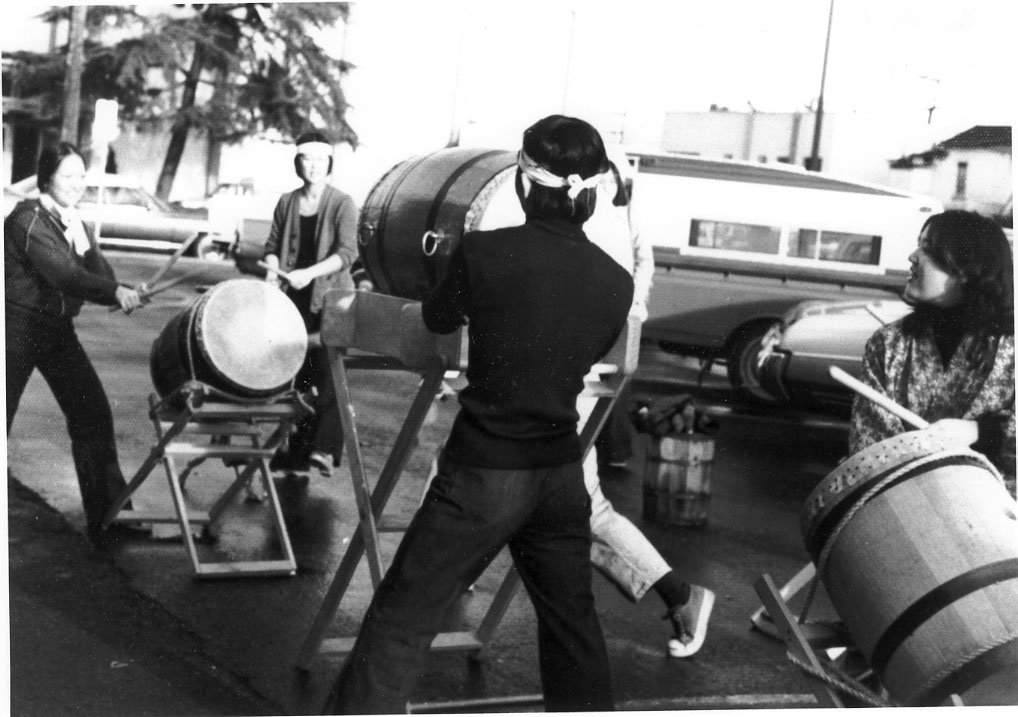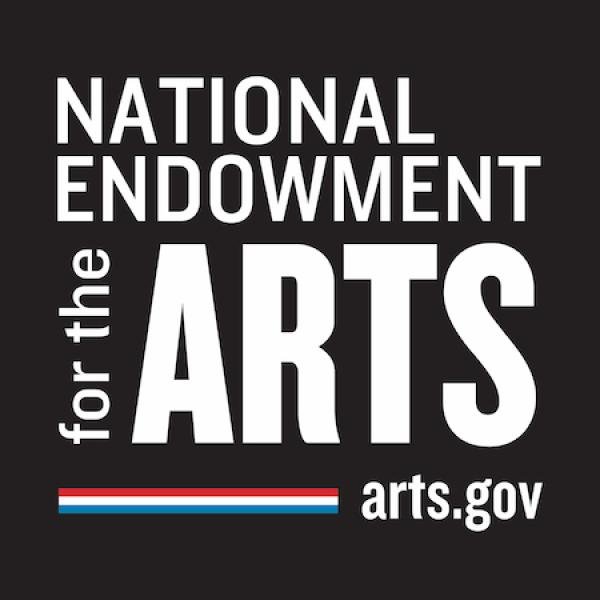Seminal Works
Their contributions helped form the integrity of North American taiko with an impossibly steady and unwavering beat of commitment for 50 years and running.
Trail blazers of taiko as a new category of Asian American art form.
PJ & Roy were one of a handful of Japanese American pioneers that championed taiko as an art form and helped to establish its momentum into the thriving and widespread musical expression it is today.
Building a taiko group with staying power.
PJ & Roy were instrumental in transforming a community grassroots taiko group, San Jose Taiko, into an enduring, revered, and consummate performing ensemble with a 50-year legacy based in their hometown of San Jose, California.
The equitable leadership approach, practice rituals, and influence of Japanese and Japanese American values that PJ and Roy forwarded and nurtured with unrelenting care from the group’s early days laid an everlasting foundation.

Music that shaped the direction of taiko.
Roy and PJ defined and expressed their Japanese American identity through the voice of taiko.
Their taiko compositions written for San Jose Taiko contributed to a fresh, unprecedented and groundbreaking repertoire of ethnic music that gave credibility to taiko as an Asian American musical genre.
Free Spirit (1983)
by Roy Hirabayashi
A conversation shared between 4 players in a lively, upbeat song combining unifying patterns and free-form solo sections. The animated exchange between players has made this song a fan favorite of San Jose Taiko’s repertoire.
Celebration (1992)
by PJ & Roy Hirabayashi
Inspired from the harvest song of the Noto Peninsula in Japan, “Celebration” is a duet piece with layers of patterns that celebrate daily life. Inspired by rhythm patterns from Asuka Ryo, a Japanese composer who visited San Jose Taiko in 1987.
Spirit of Adventure (1993)
by Roy Hirabayashi
This song was inspired by traditional patterns from taiko in Japan, East Indian percussion patterns, and contemporary music. The pulsating beats are evocative of an adventure filled with challenge and excitement.
Kin Moku (1997)
by Roy Hirabayashi & Karen Morita
Meaning “metal wood”, “Kin Moku” is a duet piece that merges the deliberate sounds and textures of a large gong and several small gongs with a single Japanese bamboo flute’s haunting melody that meanders throughout the piece.
Insight Through Sound (1991)
by Roy Hirabayashi, co-written with San Jose Taiko
This composition uses the uchiwa daiko (fan drum) to create formations, shapes, and sounds creating a visually compelling narrative. Performers move in undulating patterns across the stage to tell a constantly changing story.
NanaShi (1992)
by Roy Hirabayashi
Translated into English, “NanaShi” means “seven four”. This song intricately weaves polyrhythms into a 7/4 time signature with overlapping patterns, giving soloists a cool challenge to stay in the groove of the song and with each other.
The 4 Principles of Taiko
There was no written viewpoint or structured approach to learning taiko when PJ and Roy started playing in the early 1970’s, so they created one along with input from core San Jose Taiko members.
Throughout their 38 years with San Jose Taiko, the Hirabayashi’s put The 4 Principles of Taiko (ki, kata, attitude, and musical technique) into an implementable and sustainable practice. Its endurance as San Jose Taiko’s foundational philosophy can be credited in part to its simple, accessible, and practical model, broken down into just four pieces.
PJ and Roy have incorporated these principles as life-long artists with much diligence and dedication.
The definitions below reflect their original intentions for each principle.
Ki
the energy of unifying the mind, body and spirit to attain oneness with taiko, oneness with each other, and oneness with the universe
Kata
body form and movement that’s fluid yet grounded and centered while being aesthetically beautiful, agile, and dynamic
Musical technique
the mechanics of playing taiko properly with rhythmic accuracy, speed, and adherence to the oral tradition for learning, composing, teaching, and preserving songs
Attitude
respect and responsibility for the ecosystem of taiko, especially its Japanese heritage and roots; always approaching taiko with an open heart, open mind, and beginner’s mind
National Heritage Fellow
In 2011, PJ & Roy Hirabayashi received the highest artistic honor bestowed upon folk artists in the United States, the National Endowment for the Arts Heritage Fellowship.
What this award signified to them was more than personal achievement, moreover, it represented a validation of taiko as a bona fide Asian American art form within the broader landscape of American music.
50-year taiko milestone.
In 2023, PJ and Roy are celebrating 50 years of playing taiko with a special, commemorative live event… The Race for Free Spirit: A 50-year Uprising.

Since
1970
San Jose Japantown community residents, advocates, leaders and culture bearers.




